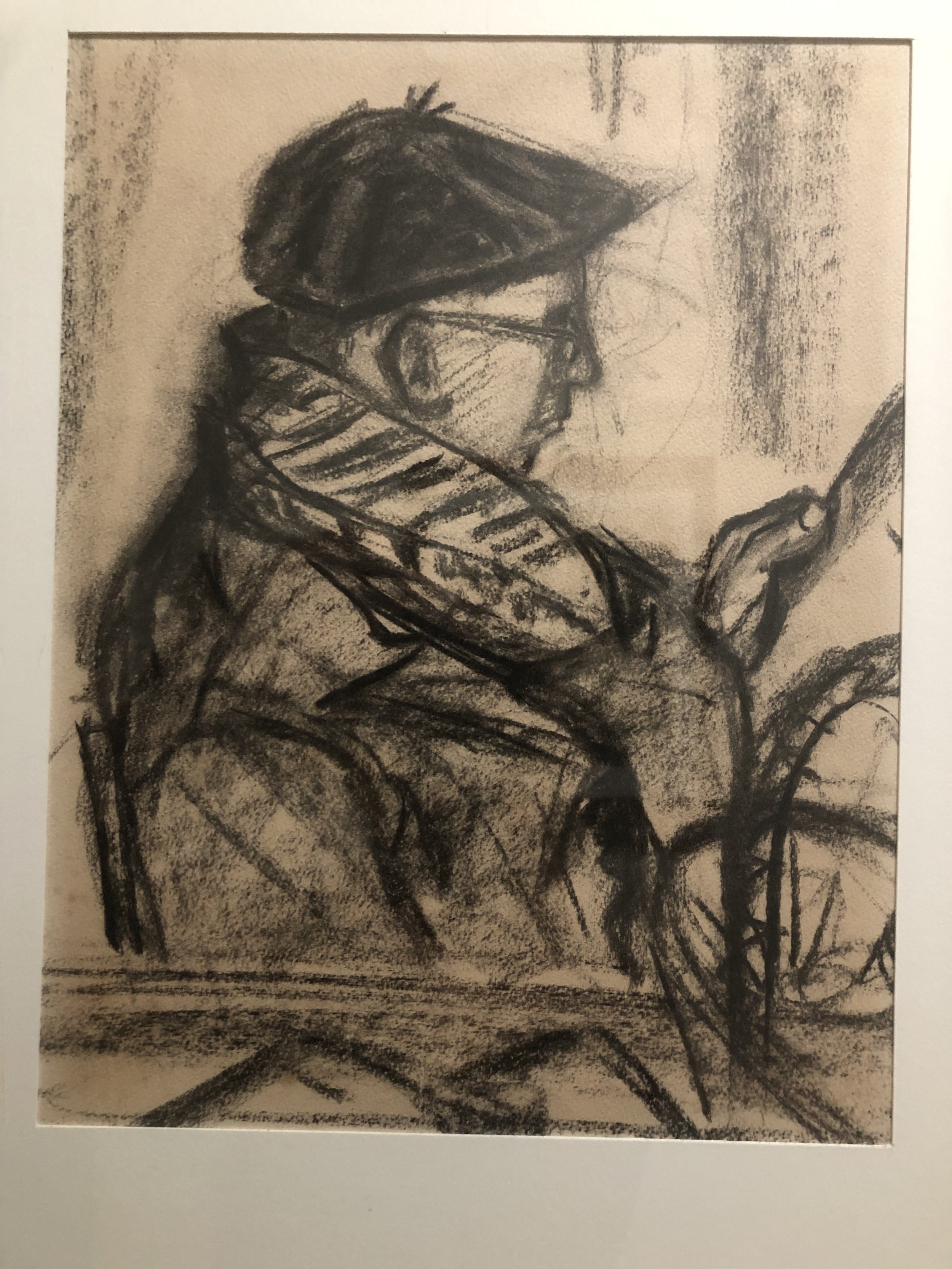Emile FILLOUX (1894-1985) Observer (Aviator Observer served in World War 1 and World War 2)
(English Translation by Catherine Filloux)
Emile Alexandre Antoine FILLOUX was born on November 27, 1894, at 5 p.m. in Noyen in the commune of Saint-Sulpice-le-Guérétois, canton of Saint-Vaury in the Creuse department of France.
He is the eldest son of Alexandre FILLOUX, farmer, 25 years old, born December 27, 1868 in Saint-Sulpice-le-Guérétois and Clémentine DELAY, housewife, 20 years old, born January 4, 1874 in Saint-Vaury in Creuse. The couple, married on January 23, 1894, and in Saint-Sulpice-le-Guérétois, three children were born: Emile on November 27, 1894 (future aviator), Henri on January 29, 1897 and Marie on March 14, 1901.
From the 1914 class, Emile was recruited in Guéret under the number 506. His description indicates: black hair, light brown eyes, medium vertical forehead, straight nose, broad face, dimpled chin, height 1.64 meters. Level of education “4” out of 5 (holder of primary education certificate). Bachelor. Civil employment: teacher.
He was incorporated on September 4, 1914, as a 2nd class soldier in the 78th Infantry Regiment in World War 1 and participated in the 1st Battle of the Marne which took place from September 5 to 14, 1914. Then the 78th R.I. was stationed at Sainte-Ménehould in the Marne until September 16, 1914 in order to reorganize itself because it suffered many losses. It was directed on September 17, 1914, towards Somme-Suippe in the Marne, for new clashes.
Emile was appointed corporal on September 12, 1914 and sergeant on May 19, 1915.
He was assigned to the Saint-Cyr training center to follow reserve officer cadet courses from August 6, 1917 to December 22, 1917. He was appointed midshipman on December 29, 1917.
At the end of 1917, the 78th R.I. fought in Italy; in Verona, Milan, Solferino, Bergamo. The flag of the 78th receives a gold medal made with the casting of jewelry offered by the mothers of Italian soldiers who fell in the fire (medal photos).
On June 9, 1918, Emile was cited in the order of the army corps: “Young midshipman who showed during the course with a helping hand, a lot of enthusiasm and contempt for danger. Charged with a difficult and perilous mission, he fulfilled it perfectly.” He is decorated with the Cross of war with silver star.
On September 24, 1918, Emile was assigned to aviation, to the observer student school in Magny-le-Châtel. His desire was to be a pilot, but the noted existence of his camera, one of the first amateur devices, the folding Vest Pocket Autographic Kodak, led him to be recruited as an observer. This device is still in the possession of his son.
Emile was assigned, on November 14, 1918, to the BR 206 squadron (on Breguet aircraft 14) as an aspiring observer, this unit is based in Lunéville in Meurthe-et-Moselle. Its badge is a 4-leaf clover (seen opposite).
Emile was promoted to second lieutenant on May 15, 1919 and placed on indefinite demobilization leave on September 16, 1919 by the Limoges aeronautics depot in Haute-Vienne. He retired to Saint-Martial-le-Mont in the Creuse, then moved to the Guéret municipal school.
He was re-assigned as a reservist to the 31st Aviation Regiment in Tours in Indre-et-Loire then to the Châteauroux Air Base in Indre following the territorial reorganization of the Air Force.
Emile FILLOUX, 25 years old, married on June 5, 1920 in Anzême in Creuse with Marie-Françoise QUELET, 25 years old, born December 9, 1894 in Anzême, who died, a few months later, of tuberculosis, October 26, 1920.
Emile was promoted to reserve lieutenant in the Air Force on July 1, 1924.
Emile FILLOUX, widower, 29 years old, remarried on September 7, 1924 in Guéret in Creuse with Marguerite BRUN, teacher, 20 years old, born October 26, 1903 in Saint-Léger-le-Guérétois in Creuse. The couple had three children; Jean in 1925, Pierre in 1926 and Madeleine in 1927.
After the war, Emile found himself with “his” pilot, 3 years his junior, from the BR 206 squadron. This reunion between Emile and Léon GERMANO took place in the Creuse and also in Bellegarde-sur-Valserine in the Ain where the latter is domiciled. They continue their friendly relations and their wives become friends.
Photo on the right, the crew Emile FILLOUX, on the left and the pilot Léon GERMANO on the right.
Emile completed several periods of military exercises; from June 2 to 26, 1932 at the 3rd Fighter Aviation Regiment then from August 16 to 29, 1937 at the Châteauroux Air Base.
During his 3rd period of exercises, which began on August 21, 1939 at the Avord camp in Cher, Emile received his summons for the general mobilization of the Second World War.
He was assigned to Pau-Aviation in the Pyrénées-Atlantiques on August 30, 1939 and came under the administration of Air Battalion No. 127.
Emile carried out the Campaign against Germany from September 2, 1939 to June 25, 1940. His rank and age meant he was assigned to the ground as a “creeper”; friendly name given to those who do not (or no longer) take part in flights.
He was demobilized on July 17, 1940 and retired to Saint-Vaury in the Creuse department. He was removed from the ranks (age limit) as of November 27, 1947.
Emile FILLOUX, widower, died in his 91st year, on January 5, 1985 in Guéret in Creuse. He rests in the Guéret cemetery with his wife, who died 5 weeks before him.
Sources & acknowledgments: Pierre FILLOUX, son of Emile FILLOUX Jean-Claude DEGAIT, 78th R.I. www.creusois.canalblog.com Albin DENIS “The French Squadrons of the Great War” www.albindenis.free.fr Sylvie DUSSOT, genealogical and historical research www.histoire-gueret.fr The Departmental Archives of Creuse in Guéret (23) www.creuse.fr The Archives of the Historical Service of the Air Force in Vincennes (94) www.servicehistoire.sga.defense.gouv.fr The civil status of the town halls concerned. Implemented by Fernande BONNEMAIN www.airmemorialcreusois.fr




